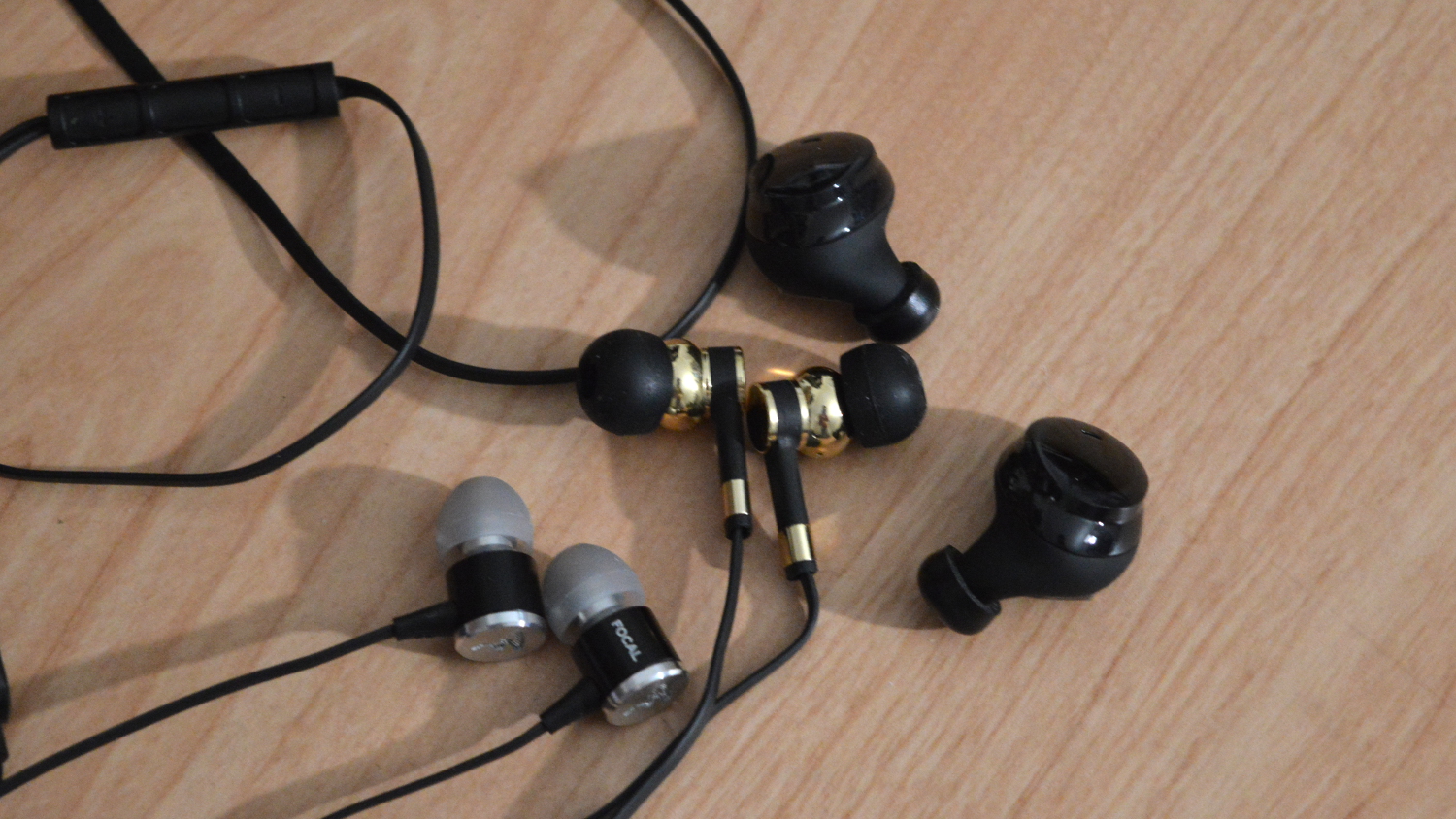In-ear headphones are the ultimate in portability. They’re easy to stuff into a pocket, ultra light, and their sound-quality is getting better and better. But there are also a ton of in-ear headphone options out there — meaning that buying a great pair isn’t necessarily the easiest thing to do.
That, however, is why we’ve put together this guide. To help you make sure you’ve considered everything you need to consider when you’re buying a pair of shiny new in-ear headphones.
Here’s everything you should keep in mind when buying a new pair of in-ear headphones.
Wired or wireless — or true wireless
While in-ear headphones have traditionally come in the wired form-factor, these days there are tons of wireless options too. Generally speaking, wireless headphones still have a wire that wraps around the user’s head, but no wire connecting to the phone or other listening device. The trade-off to that, however, is that you have to keep the headphones charged up in order to use them. Usually, wired headphones often also sound better than wireless ones, though most users won’t be able to tell the difference.
Even more technologically advanced are true wireless headphones, which are basically small earbuds that connect wirelessly to each other, and to your listening device. The most famous example of these are Apple’s AirPods, but there are other options too, like Bragi Dash Pro headphones and the new Master & Dynamic MW07. Generally speaking, the battery life is much lower on these — often ranging from 3 hours to 6 hours. Thankfully, they usually come with a charging case, so you can keep them charged up on the go.
So what do we recommend? If you want ultimate convenience, then go for a pair of good true wireless headphones. If you like the idea of wireless but don’t want to spend the money on true wireless headphones or plan on using the headphones for sports, go for wireless headphones that aren’t true wireless. And, if you want to maximize the sound quality, go for a pair of wired headphones.
Noise cancellation
Noise cancellation isn’t as common on in-ear headphones as it is over-ear headphones, but some still do offer it — and it might be a helpful feature for some users. We’re not going to go into how noise cancellation technology works (you can read about that here), but the basic gist of it is that it does a much better job at cutting out any outside noise than other headphones, as long as there’s a decent seal.
We recommend most people who travel go for a decent pair of over-ear noise-cancelling headphones, but if you really want in-ear headphones, then noise-cancelling ones might do the job. Everyone else probably doesn’t need noise cancellation in their in-ear headphones.
Driver type
Generally speaking, in-ear headphones will pretty much always offer dynamic drivers, though some instead swap those dynamic drivers for balanced armature drivers, or sometimes even planar magnetic drivers. While dynamic drivers will be fine for most users, those that want a superior sound quality may want to find some with features like dual balanced armature drivers. Planar magnetic in-ear headphones are rare, but the ones we’ve tested do sound great — so that may be something to look into.
We recommend most people simply buy a pair of dynamic-driver in-ear headphones, but if sound-quality is important, balanced armature drivers may offer a slightly improved high-end.
Water-resistance

When it comes to in-ear headphones, water-resistance may be an important feature — especially if you plan on using the headphones for sports. Not only does it mean that the headphones will be protected against rain, but also against things like sweat.
Water-resistance usually comes in a few different ratings. For starters, headphones could come with an IPX4 rating, which means that the headphones will be protected from splashes of water. IPX5 mean they’re protected against water projected at them. IPX6 means the headphones are protected against a strong jet of water. Last but not least, IPX7 means they headphones can be fully submerged in water of up to 1 meter in depth for up to 30 minutes. We don’t recommend taking IPX7 headphones swimming — but if you drop them in the pool they’ll be perfectly fine. Having said that, there are some headphones specifically designed for swimming — so if that’s important to you, you’ll need to specifically look for them.
Most people won’t need specifically water-resistant headphones, but those that plan on using their headphones for sports may want to look for them.
Frequency range
The frequency range of a pair of headphones essentially determines the range that the headphones can reproduce. The only problem with that is that most headphone manufacturers simply list their headphones as having a frequency range of 20Hz – 20kHz, which is the range of human hearing.
We don’t recommend buying a pair of headphones based on their frequency range. Instead. look at reviews to see how a pair of headphones sound.
Conclusions
There are a number of things to consider when buying a pair of in-ear headphones, but thankfully it’s now a little easier to do so.
If not, however, we have a few pointers. If you’re an average person simply looking for a pair of headphones to use in day-to-day life, then a pair of wired or wireless dynamic headphones without noise cancellation will do just fine. For sports use, go for a pair of wireless headphones with some water-resistance — and if you want the cutting edge of technology, a pair of true wireless headphones are the way to go.
Once you’ve decided on the type of headphones to buy, decide on a price range, and start reading some reviews — there are tons of headphones out there, and reviews will likely help you figure out the right ones to go for.


